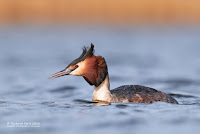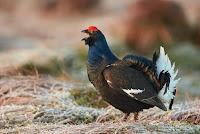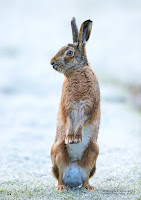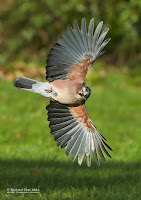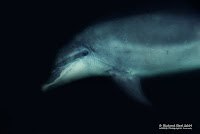January - saw me sat of a freezing North Wales beach photographing a flock of around a dozen Snow Bunting.
February - I headed up to the Highlands to try and photograph a Capercaillie. Such a magnificent bird which has left life long memories.
March - A prolonged cold spring and instead of photographing hares amongst the daffodils, they were boxing in deep snow.
April - Calling in to the Forest of Dean to break up a long long drive home from a work meeting found me with a long awaited Garganey in front of the camera for the first time.
May - I tried to restict myself to photograph from each month but failed in May which is always one of the busiest months for a wildlife photographer. A first light start saw a reeling Grasshopper Warbler in front of me. I have many photographs of these birds now but find myself drawn back to them each spring.
A chance encounter with a beautiful vixen.
June - I headed off on my annual overseas trip in June to Romania and the Danube Delta. A beautiful place filled with many wonderful birds. Here is one of the images from the trip of a Squacco heron feeding on a frog.
July - On my return from Romania I had a concerted effort with trying to photograph the extremely wary Green Woodpecker with a moderate degree of success. In this photograph the young bird on the left is watching the adult male excavate yet another ants' nest.
August- I returned to Scotland once again but this time to photograph the Ospreys at Rothiemurchus. An amazing experience just to watch, let alone photograph.
September - Throughout the summer I had been undertaking various sessions with water voles on a Cheshire canal. This was part of a long term project and some very enjoyable and relaxing morning were had by the waterside.
October - A fairly quiet month although I did head out to North Wales to try and photograph a Grey Phalarope. After several hours waiting the bird came close only to be scared away by the sudden appearance of a large dog, resulting in only a couple of photographs being taken.
November - An unexpected encounter with some Redwing feeding on rowan trees against a back cloth of autumn hues
December - Another chance encounter, this time with a beautiful male bullfinch whilst trying to photograph Fieldfare.
Of course December is not over yet and tomorrow will see me heading out to try and capture my first images of Mountain Hare. Hopefully this will produce some more special memories to add to what has been another interesting year in my journey in wildlife photography.
This will be my last blog post for this year so I will take the moment to wish you all a Happy, Healthy and wildlife filled 2014.






.jpg)

















































